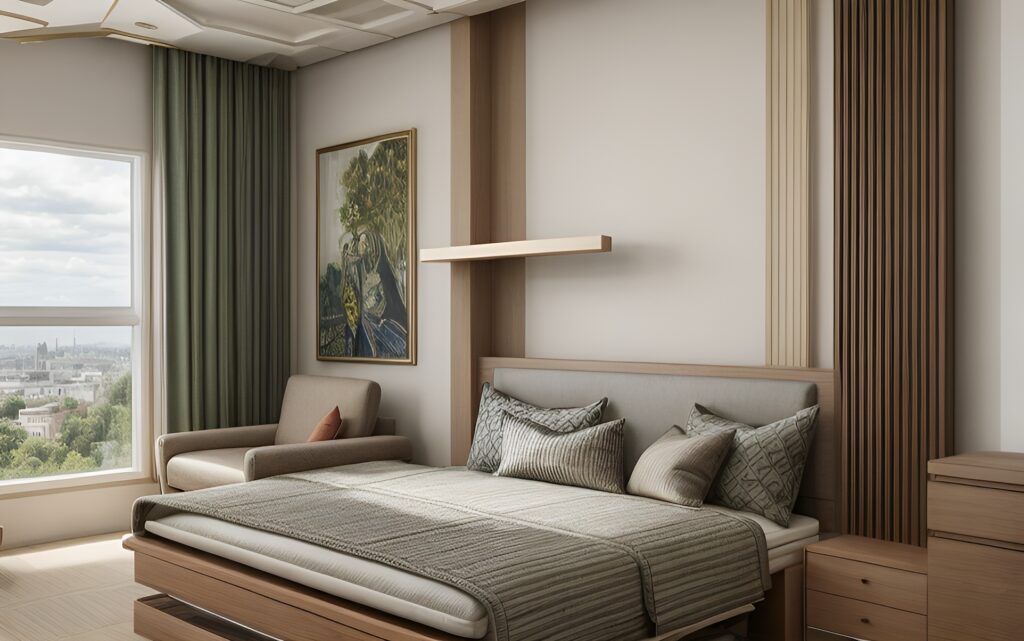
Lighting is often an overlooked element in interior design, yet it plays a crucial role in shaping the atmosphere and functionality of any space. Well-planned lighting can transform a room, enhance its features, and significantly impact our mood and productivity. Let’s explore how to create a lighting design that balances ambiance and functionality.
1. Understanding the Three Types of Lighting
Effective lighting design incorporates three main types of lighting:
a) Ambient Lighting: This provides overall illumination and sets the base light level of a room.
b) Task Lighting: Focused lighting for specific activities like reading, cooking, or working.
c) Accent Lighting: Used to highlight specific features or create visual interest.
2. Layering Your Lighting
Combine these three types to create depth and dimension:
– Start with ambient lighting as your foundation
– Add task lighting in work areas
– Finish with accent lighting to add character
3. Consider Natural Light
Work with the natural light in your space:
– Position mirrors to reflect and amplify daylight
– Use sheer curtains to soften harsh sunlight
– Consider light tubes or skylights for darker areas
4. Choose the Right Color Temperature
Color temperature affects the mood of a space:
– Warm light (2700-3000K): Cozy and relaxing, ideal for living rooms and bedrooms
– Cool light (3500-4100K): Energizing, good for home offices and kitchens
– Daylight (5000-6500K): Ideal for task-oriented spaces like laundry rooms
5. Dimmer Switches for Flexibility
Install dimmer switches to adjust light levels:
– Creates versatility in multi-use spaces
– Allows for energy savings
– Helps transition the mood from day to night
6. Task Lighting for Functionality
Ensure proper illumination for specific activities:
– Under-cabinet lights in kitchens
– Desk lamps in home offices
– Reading lamps by beds or armchairs
7. Accent Lighting for Drama
Use accent lighting to create visual interest:
– Spotlights to highlight artwork or architectural features
– Strip lighting to illuminate shelves or niches
– Wall sconces to create a soft glow on walls
8. Consider the Scale of Your Fixtures
Choose light fixtures that complement your room size:
– Large chandeliers for high ceilings
– Pendant clusters for visual impact in smaller spaces
– Recessed lighting for a sleek, unobtrusive look
9. Smart Lighting Solutions
Incorporate technology for convenience and efficiency:
– Smart bulbs that can be controlled via smartphone
– Motion sensors for energy savings
– Programmable systems to mimic occupancy when you’re away
10. Lighting for Different Room Types
Tailor your lighting to each room’s purpose:
– Living Room: Combine ambient and accent lighting for a cozy atmosphere
– Kitchen: Bright task lighting for work areas, softer lighting for dining
– Bedroom: Soft, warm lighting with bedside task lights
– Bathroom: Even facial lighting at the mirror, overhead lighting for general illumination
11. Energy Efficiency
Consider the environmental impact of your lighting choices:
– Opt for LED bulbs for longevity and energy savings
– Use timers or sensors to avoid unnecessary energy use
– Choose ENERGY STAR certified fixtures
12. Highlight Architectural Features
Use lighting to emphasize the best features of your space:
– Upward-facing lights to accentuate high ceilings
– Cove lighting to highlight moldings
– Grazing lights to emphasize textured walls
13. Create Depth with Backlighting
Add dimension to your space:
– Backlight shelving units or cabinets
– Use LED strips behind TVs or headboards
– Install toe kick lighting under kitchen cabinets
14. Don’t Forget Outdoor Spaces
Extend your lighting design to outdoor areas:
– Path lighting for safety and ambiance
– Uplighting for trees and architectural elements
– Task lighting for outdoor kitchens or dining areas
Remember, good lighting design is about creating layers of light that can be adjusted to suit different moods and activities. It’s a balance between aesthetics and practicality, enhancing both the look and functionality of your space.
By thoughtfully considering your lighting design, you can create spaces that are not only beautiful but also comfortable and functional for everyday living. Whether you’re relaxing, working, or entertaining, the right lighting can set the perfect tone for any occasion.